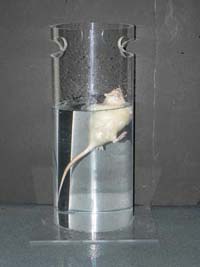
Association of Antidepressant Use During Pregnancy With Risk of Neurodevelopmental Disorders in Children.
Sign Up to like & getrecommendations! Published in 2022 at "JAMA internal medicine"
DOI: 10.1001/jamainternmed.2022.4268
Abstract: Importance Antidepressant use during pregnancy has been associated with neurodevelopmental disorders in children in some studies. However, results may be explained by uncontrolled confounding by parental mental health status, genetics, and environmental factors. Objective To… read more here.
Keywords: neurodevelopmental disorders; disorders children; antidepressant; antidepressant use ... See more keywords

Incidence of antidepressant use in community‐dwelling persons with and without Alzheimer's disease: 13‐year follow‐up
Sign Up to like & getrecommendations! Published in 2017 at "International Journal of Geriatric Psychiatry"
DOI: 10.1002/gps.4450
Abstract: The study aimed to investigate the incidence of antidepressant use in persons with and without Alzheimer's disease (AD) from 9 years before to 4 years after AD diagnosis and to examine the incidence of different antidepressant groups. read more here.
Keywords: incidence; antidepressant use; without alzheimer; antidepressant ... See more keywords

Pharmacological basis of the anxiolytic and antidepressant properties of Silexan®, an essential oil from the flowers of lavender
Sign Up to like & getrecommendations! Published in 2021 at "Neurochemistry International"
DOI: 10.1016/j.neuint.2020.104899
Abstract: Silexan®, a proprietary essential oil manufactured by steam distillation from Lavandula angustifolia flowers showed pronounced anxiolytic effects in patients with subthreshold anxiety disorders and was also efficacious in patients with Generalized Anxiety disorder (GAD). Moreover,… read more here.
Keywords: essential oil; antidepressant; type channels; properties silexan ... See more keywords

Novel, highly potent and in vivo active inhibitor of GABA transporter subtype 1 with anticonvulsant, anxiolytic, antidepressant and antinociceptive properties
Sign Up to like & getrecommendations! Published in 2017 at "Neuropharmacology"
DOI: 10.1016/j.neuropharm.2016.10.019
Abstract: Background and purpose: Since GABAergic dysfunction underlies a variety of neurological and psychiatric disorders, numerous strategies leading to the augmentation of GABAergic neurotransmission have been introduced. One of them is the inhibition of GABA reuptake… read more here.
Keywords: highly potent; ddpm 2571; inhibitor; antidepressant ... See more keywords

Influence of the CB1 and CB2 cannabinoid receptor ligands on the activity of atypical antidepressant drugs in the behavioural tests in mice
Sign Up to like & getrecommendations! Published in 2020 at "Pharmacology Biochemistry and Behavior"
DOI: 10.1016/j.pbb.2019.172833
Abstract: Available data support the notion that cannabinoids, whose therapeutic value is limited due to severe adverse reactions, could be beneficial as adjunctive agents in the management of mood disorders. Polytherapy, which is superior to monotherapy… read more here.
Keywords: antidepressant; cannabinoid receptor; receptor ligands; receptor ... See more keywords

CB1 Receptor Silencing Attenuates Ketamine-Induced Hyperlocomotion Without Compromising Its Antidepressant-Like Effects.
Sign Up to like & getrecommendations! Published in 2022 at "Cannabis and cannabinoid research"
DOI: 10.1089/can.2022.0072
Abstract: Introduction: The antidepressant properties of ketamine have been extensively demonstrated in experimental and clinical settings. However, the psychotomimetic side effects still limit its wider use as an antidepressant. It was recently observed that endocannabinoids are… read more here.
Keywords: antidepressant like; antidepressant; hyperlocomotion; cb1r ... See more keywords

Antidepressant-like effect of acute dose of Naringin involves suppression of NR1 and activation of protein kinase A/cyclic adenosine monophosphate response element-binding protein/brain-derived neurotrophic factor signaling in hippocampus
Sign Up to like & getrecommendations! Published in 2022 at "Behavioural Pharmacology"
DOI: 10.1097/fbp.0000000000000713
Abstract: Naringin (Nr) has been identified to have antidepressant-like effects through repeated treatment. However, the underlying mechanism of the rapid antidepressant-like effects of Nr was still unclear. The present study used behavioral tests, classic depressive model… read more here.
Keywords: acute dose; antidepressant like; antidepressant; hippocampus ... See more keywords

MicroRNA profiling identifies a novel compound with antidepressant properties
Sign Up to like & getrecommendations! Published in 2019 at "PLoS ONE"
DOI: 10.1371/journal.pone.0221163
Abstract: Patients with traumatic brain injury (TBI) are frequently diagnosed with depression. Together, these two leading causes of death and disability significantly contribute to the global burden of healthcare costs. However, there are no drug treatments… read more here.
Keywords: antidepressant properties; depression; profiling identifies; antidepressant ... See more keywords

Prevalence of antidepressant-induced sexual dysfunction among psychiatric outpatients attending a tertiary care hospital
Sign Up to like & getrecommendations! Published in 2020 at "Neurosciences"
DOI: 10.17712/nsj.2020.1.20190058
Abstract: Objectives: To measure the prevalence of sexual dysfunction in psychiatric outpatients treated with fluoxetine, paroxetine, venlafaxine or mirtazapine. Methods: This is a retrospective cross-sectional study conducted in Sultan Qaboos University Hospital, Muscat, Oman. All patients… read more here.
Keywords: psychiatric outpatients; sexual dysfunction; antidepressant; dysfunction ... See more keywords

Antidepressant Fill and Dose Trajectories in Pregnant Women with Depression and/or Anxiety: A Norwegian Registry Linkage Study
Sign Up to like & getrecommendations! Published in 2022 at "Clinical Epidemiology"
DOI: 10.2147/clep.s379370
Abstract: Background Few studies investigated longitudinal antidepressant exposure during pregnancy and included dosage in the assessment. Methods We conducted a nationwide, registry-linkage study in Norway using data on antidepressant prescription fills in pregnancies lasting ≥32 weeks… read more here.
Keywords: registry linkage; antidepressant fill; antidepressant; dose ... See more keywords

Considerations of Pool Dimensions in the Forced Swim Test in Predicting the Potential Antidepressant Activity of Drugs
Sign Up to like & getrecommendations! Published in 2021 at "Frontiers in Behavioral Neuroscience"
DOI: 10.3389/fnbeh.2021.757348
Abstract: The forced swim test (FST) was proposed by Porsolt et al. (1977a,b) as a relatively rapid test to identify new compounds with potential antidepressant activity in rats and mice. In this test, the total time… read more here.
Keywords: forced swim; immobility; swim test; antidepressant ... See more keywords